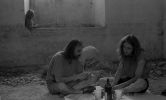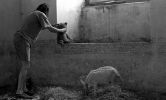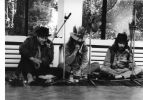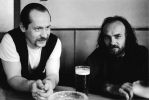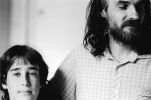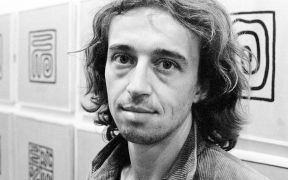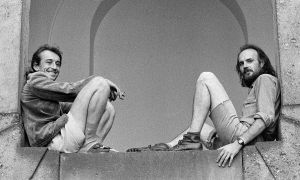"One day when Pooh Bear had nothing else to do, he thought he would do something, so he went round to Pigglet's house to see what Piglet was doing. It was still snowing as he stumped over the white forest track, and he expected to find Piglet warming his toes in front of his fire, but to his surprise he saw that the door was open, and the more he looked inside the more Piglet wasn't there."
A. A. Milne, Winnie-the-Pooh
"My last dream, which is haunting me more and more: I wake up in bed and find out that I have nothing to do and to do something at least, I'm going to visit Pigglet ..."
Marian Palla
Florian practiced a specific kind of minimal music, performances and events. They usually used simple, natural materials and their quiet sounds. Core members were Marian Palla, Petr Kvíčala, Milan Magni. The little goat was kindly lent by Mr. Lumír Pröll.
Marian Palla (born 1953) studied at the Brno Conservatory and played double-bass in the Janáček Opera House in Brno for over 15 years. At the same time, he delved in conceptual work that lies between media traditionally associated with the fine arts (drawing, painting, object, performance) and with music and literature. His work has been exhibited in the Czech Republic and abroad, and his works are represented in major galleries in the Czech Republic. From 1994 to 2011, he taught as assistant professor at the Faculty of Fine Arts of the Brno University of Technology. He published eleven books. His work is based on the best tradition tradition of black humour, Dada and nonsense-style poetry. Marian Palla, one of the key figures in an artistic generation that has had great impact on the cultural life of the South Moravia Metropolis Brno. He is now retired, and lives and works in Střelice u Brna.
Petr Kvíčala (born 1960, Svitavy) is a Czech painter. Since the mid-1980s he has experimented with ornament. A basic element of his creative language is ornamental lines, most often waves, broken lines or loops. He combines, reproduces, melds and layers them in various ways. His inspiration for this abstract and radically reduced language was originally the landscape, through which Kvíčala, sometime around 1985, realized the autonomous expressive possibilities of geometrical linear elements rhythmically repeated on an image’s surface. At that time, Kvíčala's work was characterized by a free intertwining of different disciplines: creating texts inspired by experiences in the landscape and drawing simple sketches of fields. At the same time, he worked in several groups that dealt with minimal and specific music, whose production was on the brink of theater performances and animated sculpture installations.

